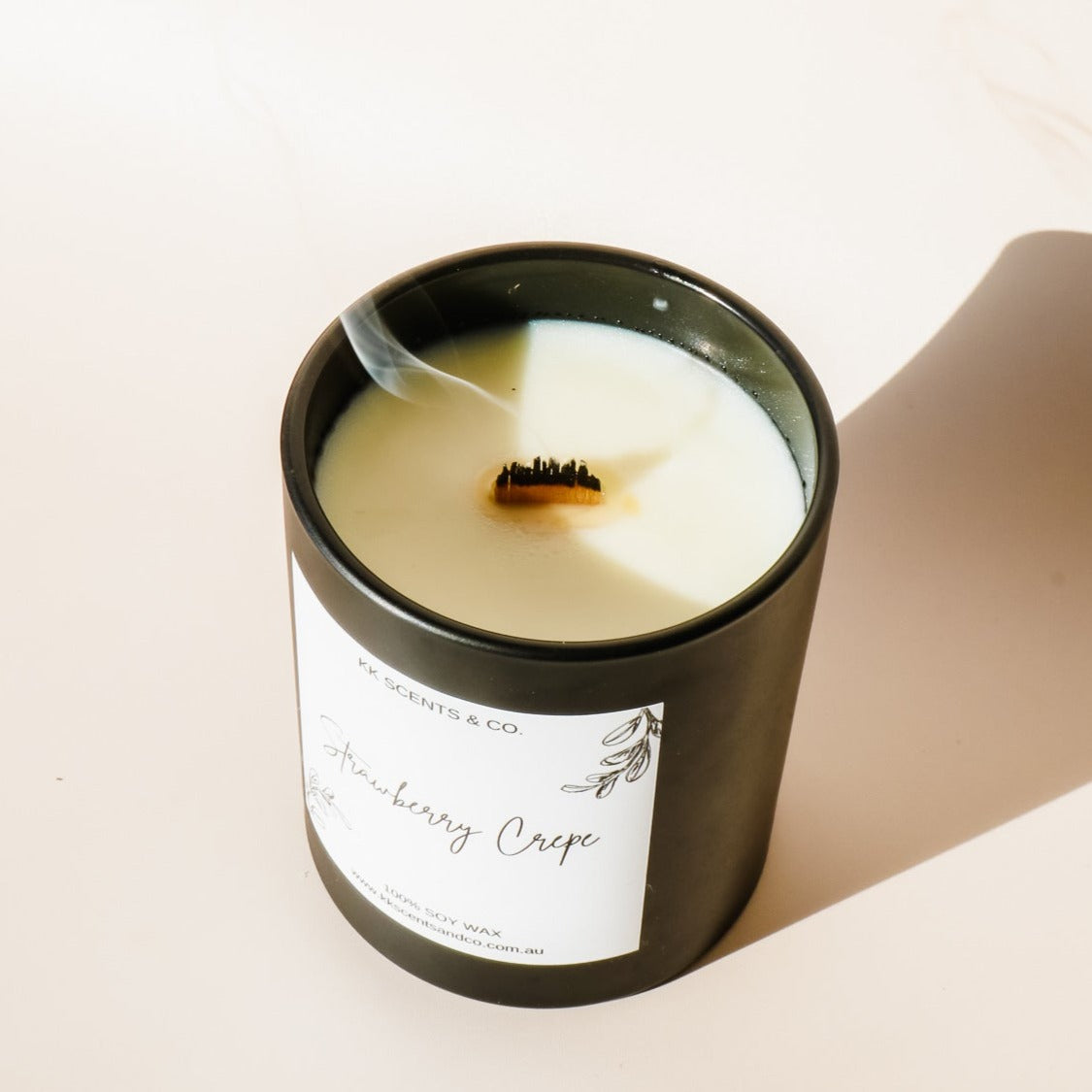From Wick to Wax: Understanding the Chemistry Behind Soy Wax Candles and Their Environmental Effect
As we illuminate our rooms with the cozy glow of candles, there lies a realm of elaborate chemistry behind the seemingly basic act of lighting a soy wax candle. The option between soy and paraffin wax prolongs past mere looks, diving into the realm of environmental impact and the very structure of the products. Recognizing the molecular structure of soy wax and its combustion procedure clarifies the emissions launched into our environments. Join us as we unwind the scientific intricacies behind soy wax candle lights and discover their ramifications on our environment.
Soy Wax Vs. Paraffin Wax
When comparing soy wax and paraffin wax for candle light making, it is vital to comprehend the distinctive features and benefits of each product. Soy wax is a natural, renewable resource acquired from soybean oil, making it environmentally friendly and biodegradable - crystal soy candles. In comparison, paraffin wax is a by-product of petroleum refining, which elevates problems about its environmental influence and sustainability
Soy wax candle lights shed cleaner and give off much less residue compared to paraffin wax candle lights, making them a healthier choice for indoor air quality. Additionally, soy wax has a lower melting point, enabling a longer-lasting candle light that spreads scent better. Paraffin wax, on the other hand, often tends to burn faster and less easily, potentially releasing unsafe chemicals into the air.
From a sustainability perspective, soy wax is preferred for its biodegradability and eco-friendly sourcing, lining up with the growing consumer preference for eco mindful products. While paraffin wax has been a standard option in candle light making due to its price and ease of usage, the shift in the direction of environmentally friendly alternatives like soy wax is obtaining momentum in the industry.
Chemical Make-up of Soy Wax

Combustion Process in Soy Candles
The chemical make-up of soy wax straight influences the burning procedure in soy candles, affecting aspects such as burn time, scent release, and ecological effect. When a soy candle is lit, the warm from the fire thaws the wax near the wick. This liquid wax is after that created the wick as a result of capillary action. As the liquid wax gets to the flame, it evaporates and undertakes burning. The burning process involves the vaporized hydrocarbons in the wax reacting with oxygen in the air to produce heat, light, water vapor, and co2.
The combustion performance of soy candles is affected by the pureness of the soy wax and the quality of the wick. Additionally, soy wax candle lights have a lower ecological impact compared to paraffin candles due to their sustainable and eco-friendly nature.

Ecological Advantages of Soy Wax

Taken into consideration a lasting option to standard paraffin wax, soy wax supplies notable ecological benefits that make it a popular option amongst eco-conscious customers. Soy wax burns cleaner and creates less soot than paraffin wax, contributing to better indoor air quality and lowering the requirement for cleansing and maintenance. On the whole, the ecological benefits of soy wax align with the growing need for environmentally friendly and lasting items in the market.
Recycling and Disposal Factors To Consider
Recycling and appropriate disposal navigate to these guys of soy wax candle lights play a crucial duty in maintaining environmental sustainability and decreasing waste in houses and neighborhoods. When it comes to reusing soy wax candles, the very first action is to make certain that the candle has actually melted completely. This can be accomplished by permitting the candle light to shed till the wick is no more functional, and afterwards allowing the continuing to be wax cool and strengthen. As Extra resources soon as the wax has actually strengthened, it can be meticulously gotten rid of from the container.

In regards to disposal, if recycling is not an alternative, soy wax candles are eco-friendly and can be safely gotten rid of in many household waste systems. However, it is always advised to inspect with neighborhood reusing facilities or waste administration solutions for details guidelines on candle light disposal to make sure proper handling and Discover More Here environmental management.
Conclusion
In conclusion, the chemistry behind soy wax candle lights reveals their environmental advantages over paraffin wax candle lights. Soy wax, obtained from soybean oil, burns cleaner and creates less soot when contrasted to paraffin wax.
When contrasting soy wax and paraffin wax for candle making, it is crucial to understand the unique attributes and advantages of each product (soy candles).Soy wax candle lights melt cleaner and discharge much less soot contrasted to paraffin wax candles, making them a healthier selection for indoor air high quality.Considered a sustainable alternative to conventional paraffin wax, soy wax supplies remarkable ecological advantages that make it a preferred choice amongst eco-conscious consumers. Soy wax burns cleaner and generates less soot than paraffin wax, adding to much better indoor air high quality and lowering the demand for cleansing and upkeep.In verdict, the chemistry behind soy wax candles reveals their environmental benefits over paraffin wax candles